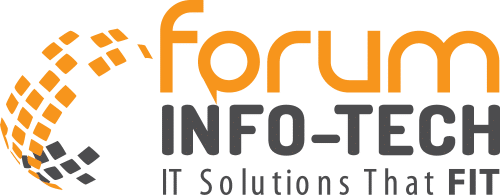As more and more businesses are becoming digitalized and must have a digital access front, they need to implement customer/employee identity and access management system. Any scalable size organization would have a growing population of data relating to customers, employees, competitors, suppliers, and partners. And all of this data can be used to an organization’s benefit.
However, not all of these agents involved with the organization should access all the information. Some might not be allowed access at all.
Identity and Access Management (IAM) system gets involved, which defines the involvement and practice rights among the users’ network and manages all the information relayed to them that is specific to them. The primary user is a customer (CIM) and an employee (EIS), which defines the primary objective of the IAM to be is to provide a singular identity to an individual user.
IAM in initiative IT is the process of identifying and controlling network access users’ characters and admittance rights, as well as the conditions under which such privileges are permitted (or withheld).
IAM arrangements deliver the overseers with the implementation techniques and technology they need to adjust a user’s position, monitor their actions, produce reports, and implement policies regularly. These processes are intended to manage user access throughout an organization while ensuring compliance with organizational procedures and general guidelines.
CIAM Tools
Authentication tools, resource allocation software, security-policy implementation software, monitoring and surveillance apps, and credential archives are just a few examples of identity and management technologies.
Forrester Research, in their report published in 2017, recognized 6 CIAM areas subdued to low maturity, yet progressive in current technological worth:
- For security implementation: it is used with Business to Business channels, cloud integration, and microservices-based IAM designs.
- Client access: allows “wide-ranging supervision and verification of users; self-service and profile management; and through incorporation with Customer Relationship Management platform, enterprise resource planning platform, and additional client support platforms and databases,” according to the report.
- Distinct user analytics: through methods based on directions, machine learning, and other program design methods, security teams will need identification and halt behaviors that could potentially be damaging.
- Identity as a service: involves software design service solutions that include SSO through cloud web apps and iOS or Android mobile devices and user account processing and access application managing tools.
- Identity managing control system: generates programmed and consistent procedures for evaluating the life cycle’s uniqueness when it comes to complying with identification and privacy laws.
Default-centered authentication options consider the framework of an operator session and security to generate a risk ranking. The company will then prompt high-risk users for 2FA while allowing low-risk users to authenticate using single-factor credentials such being username ID and password, as mentioned in the Forrester Research study.

Need for CIAM?
Client admission controls are essential components of any corporate security strategy because they are inextricably tied to organizational security and competitiveness in today’s digitally empowered economy.
In specific organizations, users have more permission rights than they require. A solid CIAM framework will provide a significant security layer by ensuring that client access protocols and regulations are applied consistently across an enterprise.
Client admission control technologies can improve company efficiency. The applications’ central management capability will reduce the difficulty and expense of protecting user accounts and entry.
CIAM for compliance management
Numerous policymakers want companies to be serious about identity security. Organizations are held responsible for managing access to consumer and employee records under regulations. Organizations may use identity management tools to help them comply with these guidelines.
The General Data Protection Regulation (GDPR) has been the latest regulation that mandates strict security and client admission control. GDPR allows organizations to protect the individual data and confidentiality of EU residents. The GDPR took effect in May 2018 and applies to any organization that does business or is in trade terms with an EU organization. Their data might process through the network in EU partner economies or is European national as clients.
User-centered character managing systems alleviate the mundane yet essential activities and assist them in line with regulatory legislation by automating certain facets of ensuring safe consumer access to corporate networks and records. These are vital advantages, given that every IT job today is a safety protocol proposition; there is a chronic global cybersecurity labor deficit, and fines for non-compliance with applicable legislation will cost a company millions of dollars.

Benefits of CIAM
Client admission control, as well as related best practices, will provide you with a substantial aggressive edge in a variety of ways. Currently, most businesses must grant external users access to in-house processes; by expanding the network to include clients, associates, vendors, consultants, and, for obvious reasons, staff, you can improve productivity and reduce operational costs.
Databases permit a firm to expand accessibility to its data bank through a wide range of on-site devices, phone applications, and SaaS tools while maintaining confidentiality. By allowing more transparency to foreign users, you can increase engagement within the company, boost morale, employee loyalty, R&D, and sales.
Identity protection will reduce the number of additional assistance requests for password resets to IT support where human interaction is key to the departments. Administrators may use identity management tools to simplify these and other time-intensive and expensive functions.
How CIAM works?
An archetypal client/user management structure used to consist of four essential elements:
- An index of the individual database the structure uses to term individual users
- An established set of instruments for tallying, altering, and matching that same data for consistency;
- An arrangement that standardizes user access
- A system that governed user access
Authentication mechanisms for checking users’ identification, such as passwords, digital signatures, tokens, and magnetic cards, have historically been used to regulate user access. Two-factor verification methods rely on combining both. 2FA mixes passwords from memory with what you physically must hold, like a card or key, hardware tokens, or credit-card-sized smart cards. An implanted smart circuit chip in a smart card may be a stable microcontroller or similar intelligence with an embedded secure data drive or a data chip alone.

Risks in implementation
Dimensional Research published a study in October 2018 titled Assessment of Identity and Access Management in 2018, based on a survey of more than 1,000 IT protection professionals. The paper, sponsored by CIAM solution provider One Identity, questioned some experts about their most difficult CIAM challenges.
Not unexpectedly, 59 percent of respondents said that data security was their top concern about their organization’s use of CIAM. Just 15% is assured that their company would not be compromised due to their access management scheme. Security professionals are also concerned about integrating CIAM with legacy systems (half of the sample), moving to the cloud (less than half), and employees using unapproved technology (close to half).

